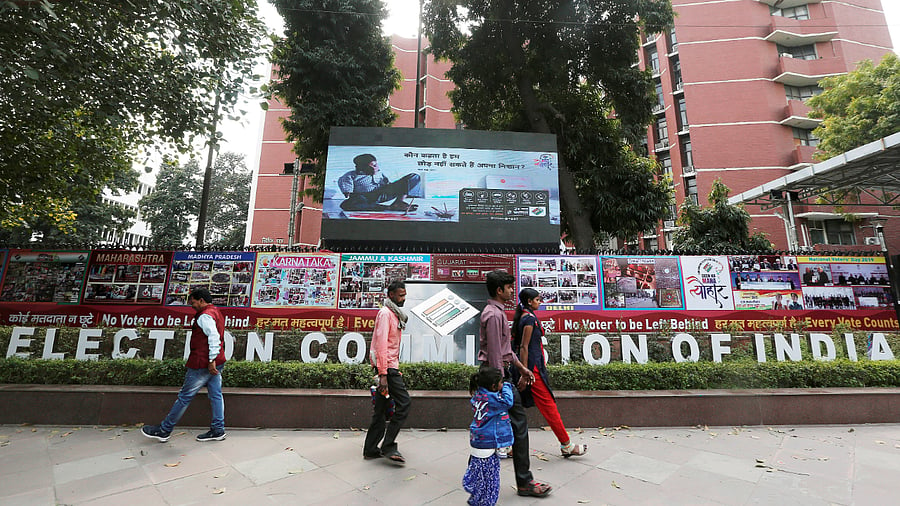
The fallout from the Maharashtra turmoil has become a battle between the Shiv Sena factions of Eknath Shinde and Uddhav Thackeray to claim the party's brand and get the right to use its iconic bow and arrow symbol.
After the collapse of the Maha Vikas Aghadi government, newly crowned Chief Minister Shinde said that his faction was the original Shiv Sena by virtue of having the support of more than two-thirds of the legislators in the party’s legislative wing.
The Thackeray-led faction, in response, wrote to the Election Commission of India (ECI) and urged the body to hear them out before making a decision on the Shinde-led faction's claim to the party symbol.
Let's look at how the ECI settles a symbol dispute if a party chooses to split itself into two.
What is the governing law?
Party symbols fall under the Election Symbols (Reservation and Allotment) Order, 1968, which aims to "to provide for specification, reservation, choice and allotment of symbols at elections in Parliamentary and Assembly Constituencies, for the recognition of political parties in relation thereto and for matters connected therewith". The order grants the ECI the authority to recognise and allot party symbols.
Disputes over party symbols fall under the purview of Paragraph 15 of the Order, which says, "When the Commission is satisfied on information in its possession that there are rival sections or groups of a recognised political party each of whom claims to be that party, the Commission may, after taking into account all the available facts and circumstances of the case and hearing such representatives of the sections or groups and other persons as desire to be heard, decide that one such rival section or group or none of such rival sections or groups is that recognised political party and the decision of the Commission shall be binding on all such rival sections or groups." Paragraph 15 has legal validity, having been upheld by the Supreme Court in 1971 in the Sadiq Ali and another vs. ECI case.
What facts does the ECI consider?
Before taking a call on which faction makes up the official party, the ECI looks at the support enjoyed by each claimant in the party’s organisational and legislative wings. More specifically, the ECI examines the party’s Constitution and the list of office-bearers that was submitted when the party was united.
In terms of support enjoyed by the claimants in a party’s organisational wing, the ECI identifies the party's apex organisational committee(s) and determines the number of office-bearers, delegates and members who support the rival claimants. For support within the party’s legislative wing, the ECI looks at the number of MPs and MLAs who support each rival claimant.
What ruling does the ECI deliver?
If the ECI determines that a faction clearly commands the support of a majority of members in the party’s organisational and legislative wings, it may settle the dispute by giving the faction with the most support the right to the party’s symbol. The losing faction, meanwhile, may be asked to form a separate political party.
What if majority support is unclear?
In case the ECI finds that there exists no clear majoritarian support for either faction, it may freeze the party's symbol and allow the two factions to register themselves with new party names or add prefixes and suffixes to the existing party name to make clear distinctions about the new entities that are formed.
